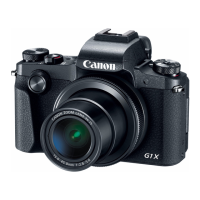
Do you have a question about the Canon PowerShot G1 X Mark III and is the answer not in the manual?
| Battery type | NB-13L |
|---|---|
| Battery charger included | Yes |
| Megapixel | 24.2 MP |
| Camera type | SLR Camera Body |
| Sensor type | CMOS |
| Image sensor size | - \ |
| Image formats supported | JPG, RAW |
| Supported aspect ratios | 1:1, 3:2, 4:3, 16:9 |
| Maximum image resolution | 6000 x 4000 pixels |
| Image stabilizer location | Lens |
| Still image resolution(s) | 6000 x 4000, 3984 x 2656, 2976 x 1984, 2400 x 1600, 2400 x 1600, 3552 x 2664, 2656 x 1992, 2112 x 1600, 6000 x 3368, 3984 x 2240, 2976 x 1680, 2400 x 1344, 4000 x 4000, 2656 x 2656, 1984 x 1984, 1600 x 1600 |
| Digital zoom | 4 x |
| Optical zoom | 3 x |
| Combined zoom | 12 x |
| Focal length range | 15 - 45 mm |
| Maximum aperture number | 5.6 |
| Minimum aperture number | 2.8 |
| Lens structure (elements/groups) | 9/8 |
| Maximum focal length (35mm film equiv) | 72 mm |
| Minimum focal length (35mm film equiv) | 24 mm |
| Product color | Black |
| Focus adjustment | Auto/Manual |
| Auto Focus (AF) points | 49 |
| Auto focusing (AF) modes | Continuous Auto Focus, Servo Auto Focus, Single Auto Focus |
| Closest focusing distance | 0.1 m |
| Normal focusing range (tele) | - m |
| Auto Focus (AF) points selection | Auto, Manual |
| Operating temperature (T-T) | 0 - 40 °C |
| Operating relative humidity (H-H) | 10 - 90 % |
| Light metering | Centre-weighted, Evaluative (Multi-pattern), Spot |
| ISO sensitivity | 100, 125, 160, 200, 250, 320, 400, 500, 640, 800, 1000, 1250, 1600, 2000, 2500, 3200, 4000, 5000, 6400, 8000, 10000, 12800, 25600, Auto |
| Light exposure modes | Aperture priority AE, Auto |
| ISO sensitivity (max) | 25600 |
| ISO sensitivity (min) | 100 |
| Light exposure control | Program AE |
| Light exposure correction | - |
| Fastest camera shutter speed | 1/2000 s |
| Slowest camera shutter speed | 30 s |
| Flash modes | Auto, Flash off, Flash on, Manual, Red-eye reduction, Second curtain synchro, Slow synchronization |
| Flash range (tele) | 0.5 - 4.5 m |
| Flash range (wide) | 0.5 - 9 m |
| Video resolutions | 640 x 360, 1280 x 720, 1920 x 1080 pixels |
| Video formats supported | AVC, H.264, MPEG4 |
| Maximum video resolution | 1920 x 1080 pixels |
| Resolution at capture speed | 640x480@25fps, 1280x720@25fps, 1920x1080@25fps, 1920x1080@50fps |
| Audio formats supported | LC-AAC |
| Compatible memory cards | SD, SDHC, SDXC |
| Scene modes | Night landscape, Panorama, Portrait, Self-portrait |
| Photo effects | Neutral |
| White balance | Auto, Cloudy, Daylight, Flash, Fluorescent L, Shade, Tungsten, Underwater |
| Shooting modes | Auto, Program |
| Image processor | DIGIC 7 |
| Self-timer delay | 2, 10 s |
| Display diagonal | 3 \ |
| Display aspect ratio | 3:2 |
| Display resolution (numeric) | 1040000 pixels |
| Viewfinder type | Electronic |
| Viewfinder resolution | 2360000 pixels |
| Viewfinder screen size | 0.39 \ |
| USB version | 2.0 |
| USB connector | Micro-USB B |
| HDMI connector type | Micro |
| Wi-Fi standards | 802.11b, 802.11g, Wi-Fi 4 (802.11n) |
| Bluetooth version | 4.1 |
| Depth | 51.4 mm |
|---|---|
| Width | 115 mm |
| Height | 77.9 mm |
| Weight | 399 g |
Lists memory cards usable with the camera, including SDHC and SDXC types.
Explains essential camera functions and procedures for getting started with shooting and playback.
Details the process for safely removing the battery pack and memory card from the camera.
Guides users on setting the camera's date, time, and home time zone for accurate image data.
Introduces fundamental camera operations like turning the camera on/off and basic shooting/playback modes.
Focuses on using automatic settings for optimal shots based on scene and subject conditions.
Details the Smart Auto mode for fully automatic shooting, including scene detection and composition.
Explains how to start and stop recording movies using the camera's Auto modes.
Describes how to use the self-timer to include yourself in group photos or timed shots.
Details how to perform continuous shooting by holding down the shutter button in Auto mode.
Guides on registering face information, names, and birthdays for up to 12 people for Face ID.
Explains the benefits and usage of capturing images in RAW format for advanced editing.
Explains how to use the electronic level to ensure the camera is perfectly level for accurate shots.
Introduces scene modes that automatically configure settings for optimal shots based on the scene.
Guides on using Self-Portrait mode for customizable image processing, including skin smoothing.
Guides on using Program AE mode to customize many function settings for preferred shooting style.
Explains how to adjust standard exposure in 1/3-stop increments using the exposure compensation dial.
Describes how to lock exposure and focus separately before shooting.
Explains how to improve gradation in bright areas to avoid losing detail in highlights.
Guides on adjusting white balance to make image colors look more natural for the scene.
Explains how to set a custom white balance by shooting a white object.
Explains how to restrict focus to subjects at close range using Macro mode.
Covers changing the auto focus mode to suit shooting conditions.
Guides on selecting a specific person's face to focus on for shooting.
Explains how to shoot after choosing a specific person's face or another subject to focus on via touch.
Details how to change the flash mode to match the shooting scene, such as Auto, On, Slow Synchro, and Off.
Describes how to lock flash exposure for flash shots, similar to AE lock.
Explains how to adjust image stabilization (IS) mode settings, including deactivating it.
Guides on setting preferred shutter speed in Tv mode, with automatic aperture adjustment.
Details setting preferred shutter speed and aperture value in Manual mode for desired exposure.
Guides on setting up the Touch & Drag AF feature to move the AF frame by touching or dragging the screen.
Covers reassigning functions to various camera buttons, dials, and rings for personalized operation.
Guides on entering Playback mode and navigating through captured images and movies.
Guides on how to change the name associated with a detected face.
Explains how to erase names associated with detected faces.
Details how to zoom in and magnify images using the zoom lever and touch gestures.
Explains how to protect important images from accidental erasure.
Explains how to select a range of images for operations like protection or erasure.
Details how to protect all images on the memory card simultaneously.
Explains how to remove protection from all images on the memory card.
Details how to select all images on the memory card for operations like erasure or printing.
Explains how to use drag gestures on the screen to activate assigned functions.
Guides on reassigning dragging patterns to camera operations for personalized control.
Explains how to save copies of images with reduced recording pixels or dimensions.
Explains how to choose themes like Date, Person's name, Event, or Custom for creating albums.
Lists the available wireless features, including Wi-Fi and Bluetooth connectivity.
Details how to use Wi-Fi to send images and control the camera remotely with smartphones, computers, and web services.
Explains how to pair the camera with a smartphone via Bluetooth for remote control and image transfer.
Guides on pairing the camera with a smartphone via Bluetooth and sending images.
Explains how to use NFC for simplified connection and image transfer to Android smartphones.
Details how to connect the camera to an existing access point via Wi-Fi.
Provides details on computer requirements and preparing it for Wi-Fi connection.
Guides on downloading and installing the CameraWindow software for computer connection.
Covers adding Web services, including CANON iMAGE GATEWAY, to the camera.
Guides on linking the camera to CANON iMAGE GATEWAY by adding it as a destination Web service.
Covers sending images automatically from the memory card to a computer or Web service.
Covers using the Camera Connect app to browse images and remotely control the camera.
Guides on taking shots and recording movies while viewing the shooting screen on a smartphone via Wi-Fi.
Explains how to restore default camera settings if they are accidentally changed.
Guides on restoring all camera settings to their factory default values.
Covers connecting the camera via USB cable to save images to a computer.
Provides solutions for common camera problems related to power, lens, memory card, and display.
Troubleshooting steps for issues like the power button not responding or the battery draining quickly.
Troubleshooting steps for issues preventing image or movie playback.
Addresses issues with playback interruptions or audio skips, possibly due to memory card speed.
Provides responses to various error messages encountered during shooting or playback.
Troubleshooting Wi-Fi connection issues like connection failure or inability to find access points.
Steps to resolve connection failures, including checking access point settings.
Guidance on checking and correcting Wi-Fi security settings and passwords.
Troubleshooting steps for memory card errors, including formatting and correct insertion.
Addresses receiving failures due to insufficient space on the memory card or the card being locked.
Provides safety guidelines for handling the camera, including avoiding impact and moisture.
Highlights security measures for Wi-Fi networks, emphasizing authorized network usage.
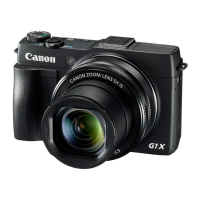
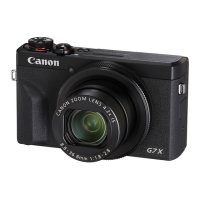
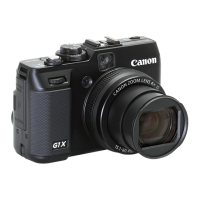
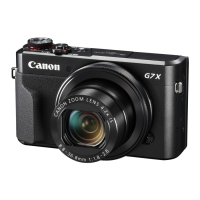
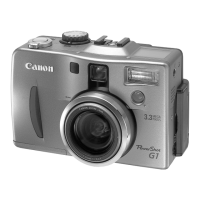
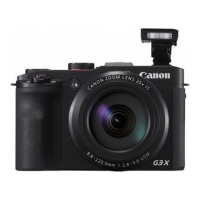
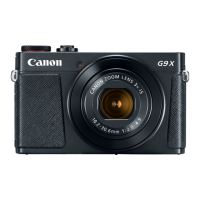
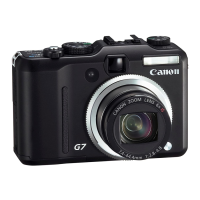
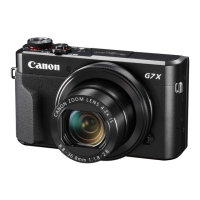
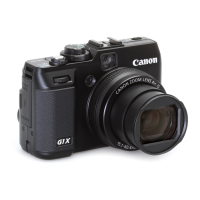
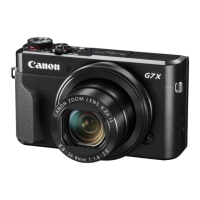

